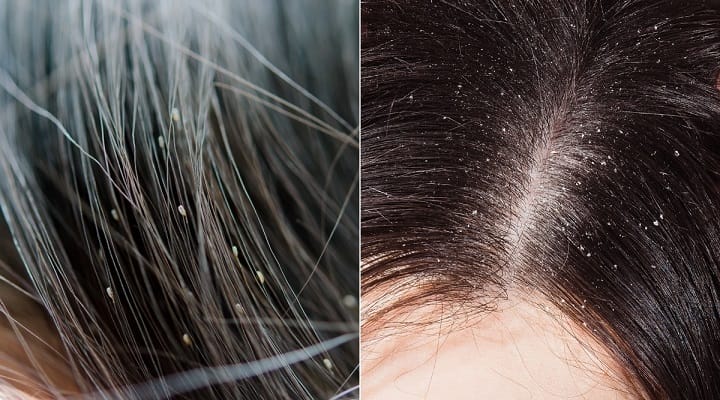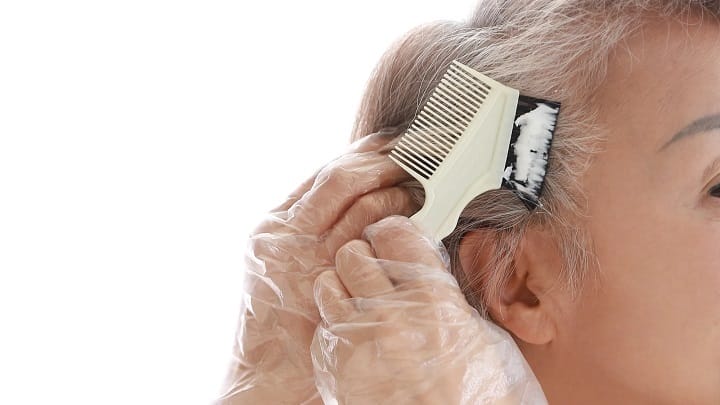You might think that you are killing two birds with one stone when you get your hair colored if you find your scalp and hair having a lice infestation.
The reason is that some believe that there are chemicals in the hair dye that will help kill the lice.
But is that true?
Does hair dye kill lice?
If you want to learn more about this topic, continue reading.
Table Of Contents
Is Hair Dye Effective Against Lice
You might think that because of all the chemicals contained in hair dye, you can use it to kill lice. No conclusive research has proven that hair dye can help complete lice removal.
However, there has been lots of anecdotal evidence that it does kill lice, but it does not do anything to the nits or the eggs of the head lice.
If anecdotal evidence is enough for you, you can try this method. You can then use another method to deal with the nits later.
How to Apply Hair Dye to Treat Lice
Step 1 – Use a lice comb
Before you use the hair dye, use a fine-tooth lice comb to remove as many of the lice in the hair as possible. Comb through the hair, from the roots to the tips. Clean the comb in a bowl full of steaming hot water to kill the lice and the nits before using it again.
Step 2 – Prepare the hair dye according to the package instructions
Get whatever brand of hair dye you want and prepare them according to the instructions on the label. Make sure you use the prepared hair dye within an hour or it will start to oxidize. What color should I dye my hair, you ask? It will entirely depend on you.
Step 3 – Apply the hair dye to the hair
Dry the hair using a towel and wash it in hot water later, as it can also carry lice. Carefully apply the hair dye on the hair, ensuring that you cover every strand from as close to the base as you can up to the tips.
Can you dye wet hair? Yes, but in this case, it is not advisable as it will dilute the hair dye too much.
Step 4 – Wait and rinse the hair
Place a shower cap over the dyed hair to keep the hair dye from oxidizing too quickly. Wait the requisite amount of time stated on the packaging, then completely rinse the excess dye using lukewarm water.
Step 5 – Go through the hair with the lice comb again
Grab the lice comb and prepare another bowl of hot water. Comb through the freshly dyed hair to remove any remaining lice and nits stuck on the hair shafts. Wash the comb in hot water between strokes.
Step 6 (optional) – Use a hairdryer
This step is optional as it can damage freshly-dyed hair. However, if you want to ensure that you get all the lice and nits, this is advisable. Set the hairdryer on high heat, then carefully dry your hair thoroughly. Hopefully, the heat can kill any lice left in the hair.
Things to Keep in Mind When Using Hair Dye
Hair Dye Will Not Kill The Eggs
As mentioned earlier, although hair dye can smother and kill the lice, it may still leave many of them alive. The contents of this product can’t kill the eggs that the lice would have undoubtedly laid in the hair.
This means that hair dye is not a true solution against lice. It will be like doing bleach-free hair lightening.
Medicated Lice Shampoo Will Work Better
Unlike hair dye, medicated lice shampoo guarantees it can kill the lice and their eggs. Hair dye only smothers the lice but will not poison them. If you don’t use enough hair dye to cover all the lice, you can’t eradicate them.
Medicated shampoo is easier to work into your hair to cover almost all the lice. They also contain chemicals that can efficiently kill parasites.
Hair Dye Is Not Ideal to Use on Children
Young kids usually get hair infested with lice, but it is not recommended to use the hair dye treatment on them.
Hair dye contains many harmful chemicals, and children’s skin is more sensitive to harsh chemicals.
There is, therefore, a risk of the potential damage that parents should keep in mind before using this product on their children who have problems with lice infestation.
Risks of Using Hair Dye
- Be careful not to get hair dye in the eyes – If you are using it on yourself or somebody else, do so slowly and deliberately. Even a single drop of hair dye that gets in the eye will cause serious irritation, which, if it gets infected, can lead to vision loss.
- Be careful not to ingest the hair dye – Although not entirely toxic, the hair dye can irritate the lining of the mouth and throat when accidentally ingested.
- It might cause allergic reactions – Do a skin test whenever you use a new brand of hair dye, as you might be deathly allergic to any of its ingredients. To do this test, prepare a small bit of the hair dye and put it on your arm. Observe your skin if it shows any signs of irritation. You should reconsider using the said hair dye if you find any swelling, reddening, or itching.
- It can damage fragile hair – Kids have thin and fragile hair, which might get seriously damaged when dyed. You cannot dilute the dye to make it less damaging because it defeats the point of using it to kill the lice. If the treatment does damage your hair, get a butterfly haircut to remove the split ends.
Other Methods for Killing Lice
Silicone-Based Treatment
If you don’t want to use an insecticide, use silicone-based lice treatments, particularly lotions that contain dimethicone. Dimethicone is a silicone-based substance that works the same way hair dyes purportedly do, as it also smothers and suffocates the lice.
In addition, they will disrupt the lice’s ability to regulate and retain water, effectively dehydrating them. Unlike pyrethrin, lice cannot develop a resistance to dimethicone, as it is not an insecticide.
However, it will leave the hair quite greasy and heavy for a couple of days because silicone is highly hydrophobic. This means you can’t rinse it out easily, making your hair dry and frizzy after a while.
Also, while waiting for the dimethicone to wash out, find easy hairstyles to try in the meantime.
Insecticide-Based Treatment
This is the most common lice treatment used today. Typically, medicated lice shampoo is perfect for treating lice infestations.
These shampoos usually contain pyrethrin, a natural insecticide typically safer than the industrial-strength chemicals used by professional exterminators.
Pyrethrin can efficiently kill lice upon contact, unlike hair dye, which only smothers and suffocates them. However, you need to use this regularly until you know that every last lice and egg is eliminated.
The reason is that they may also develop a resistance to pyrethrin over time.
Plant-Based Treatment
If you want a natural lice treatment, you can find plenty of plant-based treatments. Most of these products use plant oils and work the same way that silicone-based treatments do, though lighter in consistency.
They cover and smother the lice and eggs, then gradually dehydrate them. Most of these products contain coconut oil as a base ingredient.
The problem with plant-based lice treatments is that they haven’t been medically proven to work. Also, because everyone is jumping into the natural product bandwagon, many small companies are making purportedly natural lice treatments.
However, not all of them are even effective in the slightest.
FAQ
Does bleach kill lice?
Yes, hair bleach can effectively kill most of the lice it touches, but they need to be exposed for a relatively long time. This means it will discolor the hair quite a bit. In addition, bleach does nothing to the nits as it cannot penetrate their shell.
What happens if hair dye gets ingested?
Depending on how much of it is ingested, it can cause serious irritation to the mouth, throat, and stomach. If you accidentally ingest hair dye, immediately seek emergency medical attention.
How long should you keep hair dye on to kill lice?
Typically, you should wait the requisite amount of time, as the hair dye packaging says, which is usually between 20 to 30 minutes. Wear a shower cap to prevent it from oxidizing too fast.
Does hair dye kill lice eggs?
No, the only thing that hair dye does to nits is it changes their colors. Hair dye smothers the lice, but they can’t penetrate the shell of the lice eggs.
Will lice treatment ruin hair color?
Yes, if you use the medicated lice shampoo, the chemicals in it will discolor your hair quite a bit. So, if your hair dyeing process did not do much to kill the lice in your hair, wait a couple of days before using a lice shampoo.
If you have delicate bleach bath hair, this will ruin the delicate blending of colors.
Is it ok to use hair dye on a child?
It is inadvisable to use hair dye on a child with hair lice. Kids’ hair is fragile and sensitive to chemicals. Choose another method other than hair dye if you treat lice on a child.
Anthony Giannotti is a senior writer and editor for Beardoholic and a licensed barber for more than 13 years. He owns 3 barbershops and has his own hair care product line that is sold in barbershops worldwide. Known for his impeccable technique and skills, Anthony is an expert in hair and beard care and he knows the best products and tools to get rid of all beard problems and have an amazing beard.



